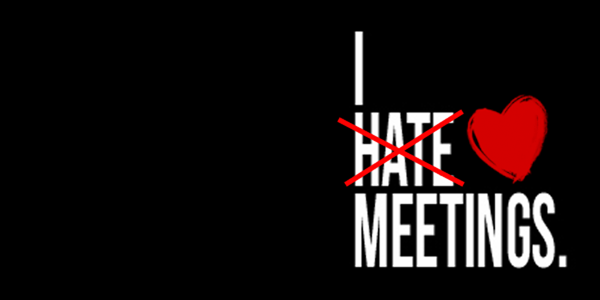Make Meetings Work
 If you’ve read my book, “The 100: Building Blocks for Business Leadership” you know I’ve devoted a fair amount of thought and study to the subject of effective meetings. While many people hate meetings, I’ve found that efficiently run meetings are productive and even fun. Just when I thought I had the perfect formula for meeting magic, I ran across a great business leadership book called “Traction,” by Gino Wickman, which expanded my thinking and meeting practices in a number of positive ways.
If you’ve read my book, “The 100: Building Blocks for Business Leadership” you know I’ve devoted a fair amount of thought and study to the subject of effective meetings. While many people hate meetings, I’ve found that efficiently run meetings are productive and even fun. Just when I thought I had the perfect formula for meeting magic, I ran across a great business leadership book called “Traction,” by Gino Wickman, which expanded my thinking and meeting practices in a number of positive ways.
Traction provided some great ideas for making our meetings better than ever. For example, not only do we find time to connect as people and colleagues (without the meeting veering off into a 20-minute account of someone’s new car or perfect golf game), we definitely focus on the issues that matter most. Wickman calls this a “meeting pulse,” which gets taken with the help of his “Level 10 Meeting Agenda.” He says, “The Level 10 Meeting Agenda is a tool that will help you get to the core of what makes for great meetings, namely conflict and resolution.”
Here are some takeaways that might help kick start your meetings too (see my sample agenda at the end and feel free to adapt it for your own organization):
- Start with sharing personal items during the “Segue” portion of the meeting, which helps to build personal connections. This is where I ask everyone to share something personal to build personal bonds (like, my kid is having challenges in school, and I’m doing A/B/C to help). The agenda has suggested time allotments for each section. This helps everyone to remember to share meaningful information concisely.
- In the part of the meeting where people share customer/employee highlights the idea is to get the meeting off on a positive note. I don’t want to ignore problems or issues, which we tackle in the “workout” section, but remembering the positive employee and customer experiences is especially important since our leadership team only meets once per month.
- Covering the Scorecard (see my previous post for more on Scorecards) and goals/rocks right away without discussion is by design because this section of the meeting just sets the stage for the in-depth discussion to follow.
- The bulk of the L10 meeting is to discuss ideas/issues. As things come up from one month to the next, I’ll email our office manager, who keeps the agenda, to make sure these items are added to the agenda. This process makes it simple to create the agenda (anyone on the leadership team can add items knowing they’ll be covered at the next meeting).
Intertech Meeting Agenda:
- Segue (11:00, 5 Minutes). Each meeting answer one of the following: What’s one good personal and professional thing since the last workout? What’s working at Intertech? What is one highlight from the weekend? What’s the biggest win in the last seven days.
- Scorecard (11:05, 5 Minutes). Review of financial and operating metrics. Update, not discussion.
- Rock Review (11:10, 5 Minutes). Review top goals. Update, not discussion.
- Customer/Employee Headlines (11:15, 5 Minutes). Share positive wins since last meeting.
- Workout (11:20, 90 Minutes). This is the core of the meeting. It is going over upcoming plans for
- strategic goals and important issues that surfaced in end-of-day huddles. Review/update quarterly goals (All). Review/update Work Plan items (All). Define 90-day work plan for ’18 goals
- Conclude (12:50, 10 Minutes). Recap To-Do List. What shook out today that needs to be tackled by whom? Cascading messages. What messages need to be communicated company-wide? Next meeting: When’s the next meeting? Rate meeting 1-10 (Should be 8+). Less than 8 merits discussion so we can improve.
- Next Meeting Date